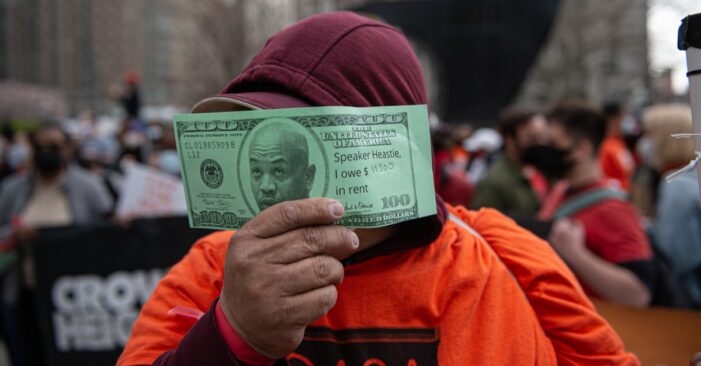Last Stand March for Relief protest at Foley Square. – New York, NY – USA – March 31st 2021. (Shutterstock)
By Johan Sheridan, News10
Gov. Kathy Hochul announced that a $100 million fund is available for New Yorkers struggling to make rent. The supplemental funding is aimed at low-income tenants facing homelessness or eviction.
“Everyone deserves the dignity of a roof over their head, yet the pandemic has inflamed housing insecurity and made it difficult for many New Yorkers to pay their rent,” Hochul said. “With far too many pushed to the brink of homelessness, this assistance, the first of its kind in many counties outside New York City, will provide a stop gap measure to keep struggling renters in their homes, while helping those in the shelter system secure permanent housing.”
The New York State Rental Supplement Program requires counties to opt-in to help homeless people and families access rent aid so they can move out of shelters. A release from Hochul’s office said their aim is to let individual counties customize a program to meet the needs of their underserved populations. It will be administered by the Office of Temporary and Disability Assistance (ODTA).
Part of the fiscal year 2022 budget, the Rental Supplement Program will gives the lion’s share—roughly $68 million—to New York City, and the remaining $32 million throughout the state. To be eligible, households must make below 50% of the area median income—regardless of immigration status—with those earning under 30% getting top priority.
The money can only be used for rent, with local social service districts determining coverage for arrears, which can only be paid with local funds. Rental supplements will fund 85% of local fair market rent values, with localities able to pay up to 100% with local funds. The announcement from the governor’s office said, “A household receiving the supplement will contribute no more than 30 percent of their total earned income toward their monthly rent.”
Counties or localities that opt-in have to submit a distribution plan to OTDA. They can administer their allocation directly or delegate it to another public agency, contractor, or non-profit organization.

